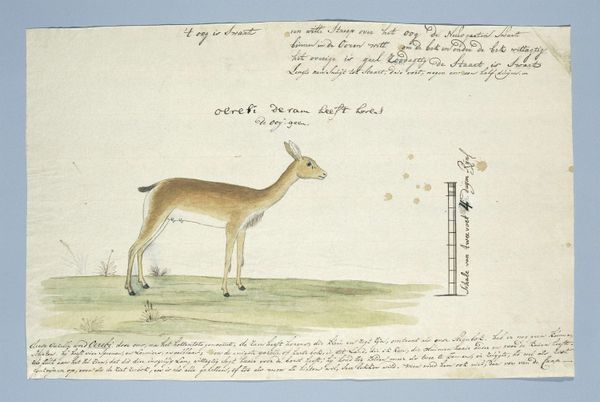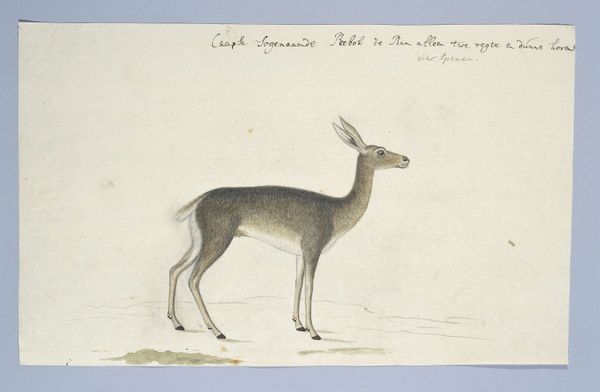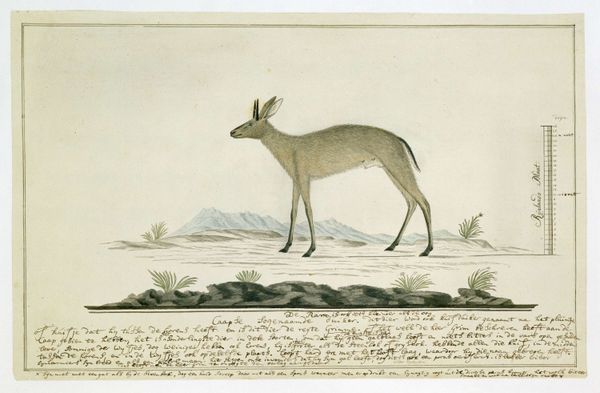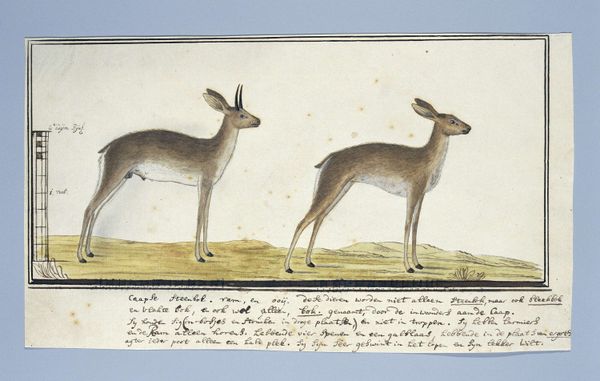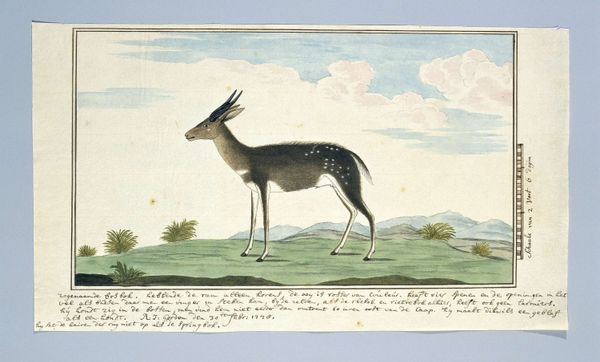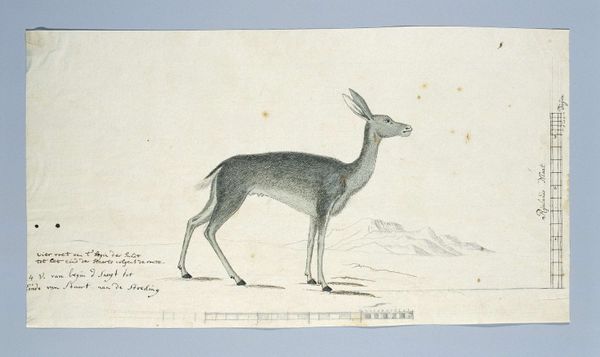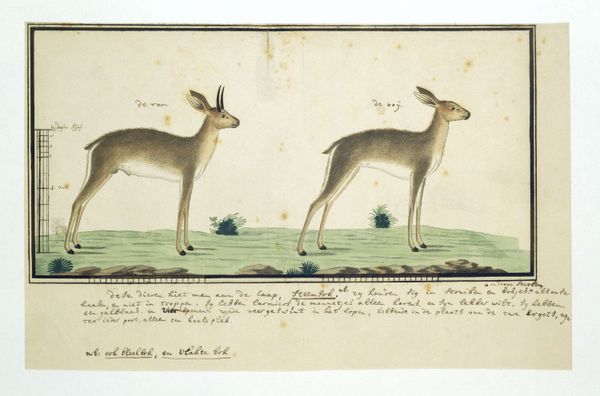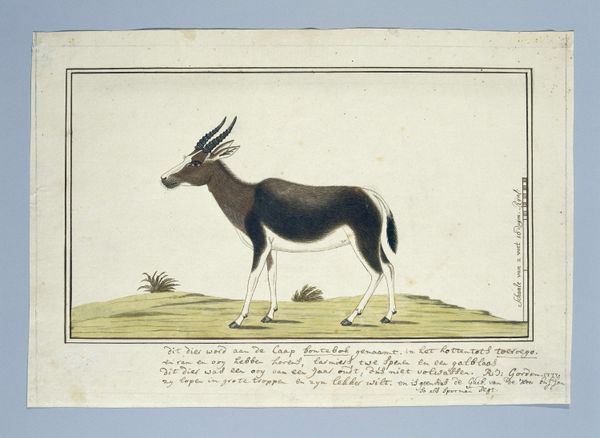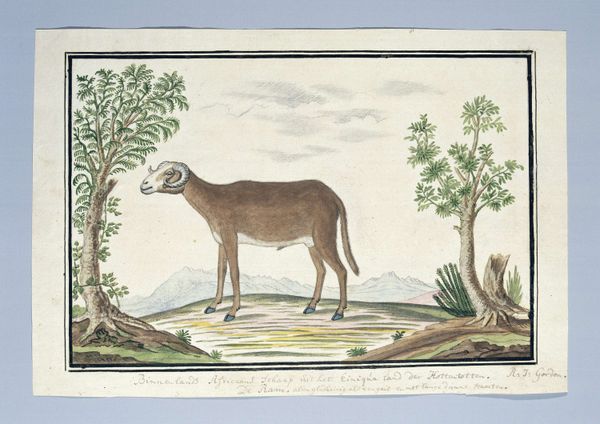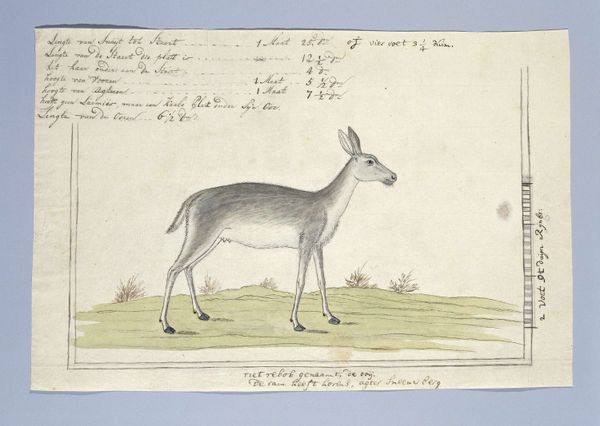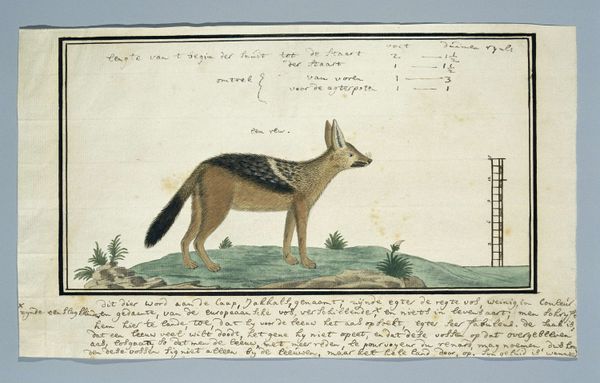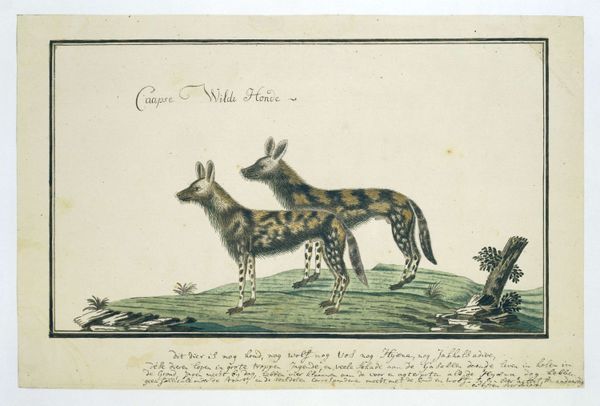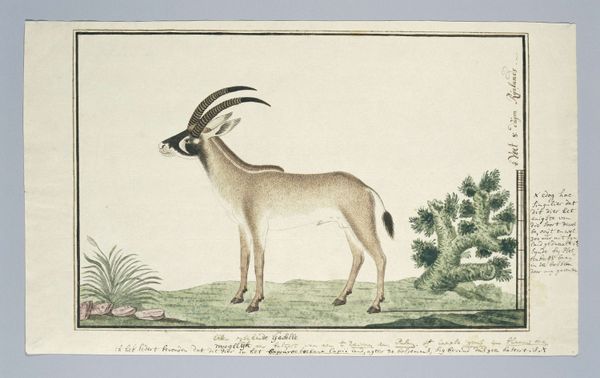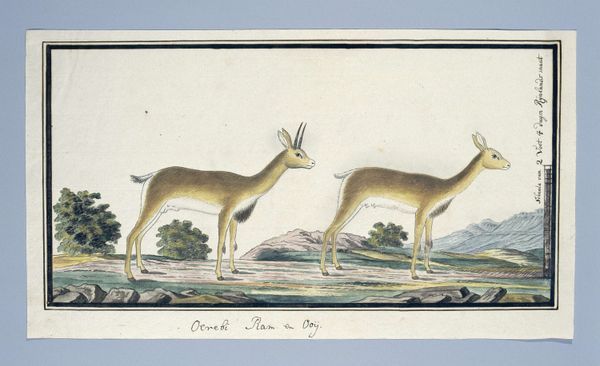
drawing, watercolor
#
drawing
#
animal
#
landscape
#
watercolor
#
watercolour illustration
#
naturalism
#
realism
Dimensions: height 660 mm, width 480 mm, height 201 mm, width 337 mm, height 175 mm, width 337 mm
Copyright: Rijks Museum: Open Domain
Curator: This delicate watercolour drawing is titled "Philantomba monticola," or Blue Duiker. Robert Jacob Gordon, likely made it sometime between 1777 and 1786. Editor: My first impression is of quiet observation. The colours are so subtle, and the creature is posed in a very still, almost reverent way. Curator: It certainly evokes a sense of stillness. Gordon was a military man, but also a keen observer of the natural world during his time in South Africa. This illustration is very typical of naturalism at the time— a blend of scientific record and aesthetic appreciation. Editor: Yes, I find it fascinating how the artist included a ruler in the picture’s lower center. It emphasizes the scientific, almost clinical observation aspect. And yet, even with the grid, I see symbolic layers here. Curator: Tell me more. Editor: Well, consider the Blue Duiker itself. Though small, it is resilient. The illustration reflects how European societies classified, organized, and often, unfortunately, sought to dominate the natural world and native cultures. It seems to represent more than just an animal, embodying colonial ambition and its urge to categorize. Curator: That’s an interesting reading. It makes you wonder about Gordon's intentions. Was he simply documenting, or was he also participating in a broader, colonial project of claiming knowledge and ownership of the land and its resources? Editor: Precisely! Art is never neutral, even depictions of animals carry the baggage of their era. The cactus on the lower right serves, maybe, as the local context marker of Southern Africa’s landscape in juxtaposition with this petite antelope, with both fauna and flora displayed for Europeans. Curator: Considering Gordon’s social and professional position during his time in South Africa adds a layer of political awareness to the artwork beyond mere appreciation for the naturalism of the artwork. I am glad we explored the various angles of context embedded in visual art. Editor: Me too. Next time, I’d like to have more historical context around this kind of project to connect those subtleties more easily.
Comments
No comments
Be the first to comment and join the conversation on the ultimate creative platform.
